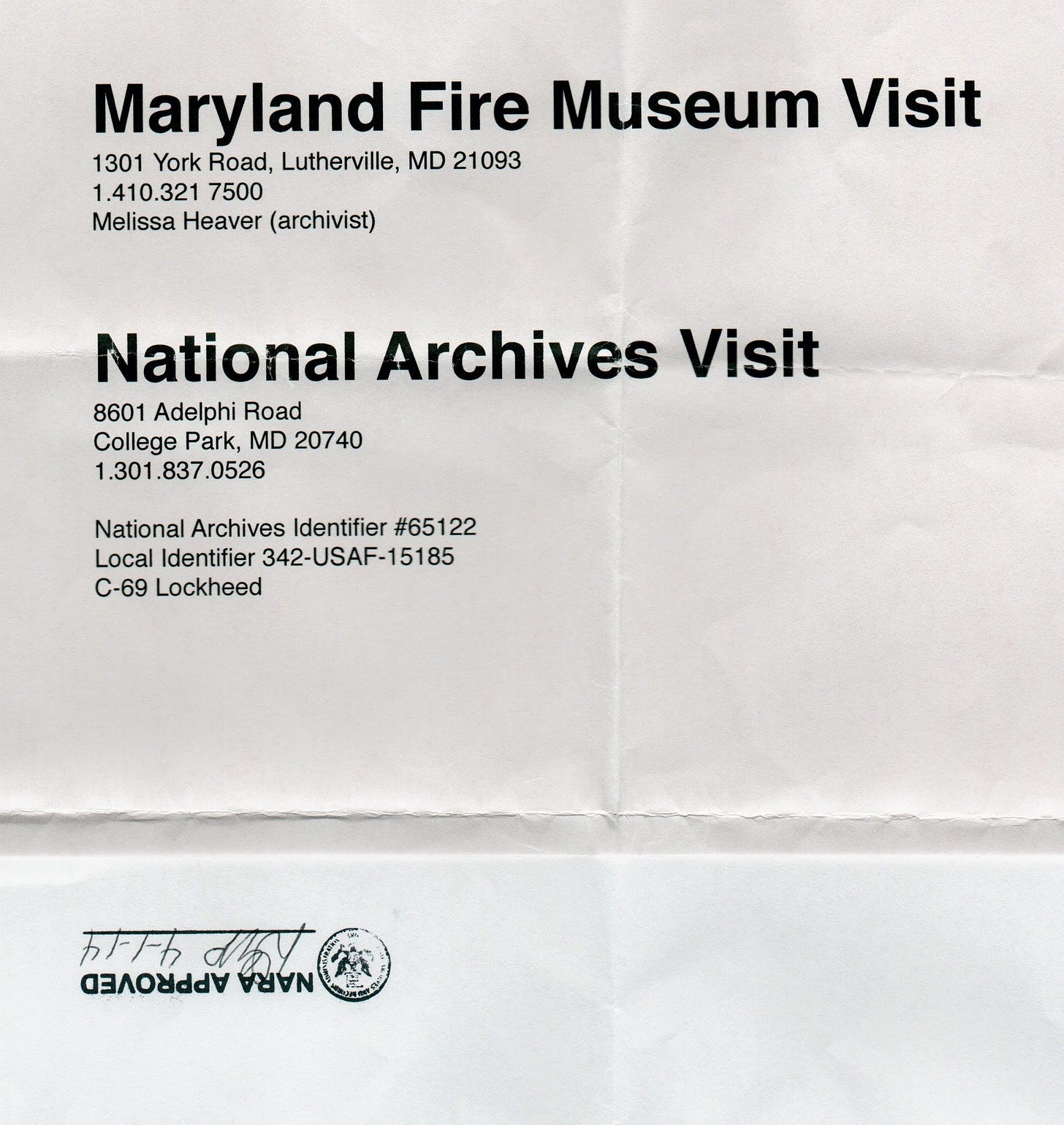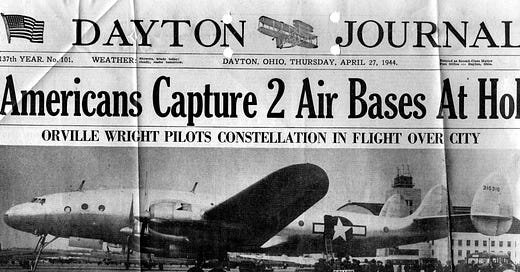Beyond the Footnote: Unearthing the Story of Orville Wright's Last Flight
A journey through century-old archives and chance encounters that brought a forgotten piece of aviation history to light

My last post explored the genesis of Orville Wright's Final Flight, a story born from a forgotten footnote and a lifelong fascination with aviation. But that initial spark was just the beginning. To transform this intriguing historical detail into a compelling narrative, I embarked on a research journey that spanned over a decade. This journey ultimately redefined my understanding of the creative process. This is a glimpse into the research process that powered my journey.
A Serendipitous Encounter
As I mentioned in my previous post, a key breakthrough came when I connected with George Hatcher Jr., the pilot's son, who flew Orville on his last flight. George Jr. generously shared his father's accounts, providing invaluable insights and details that enriched the story immeasurably. However, that connection didn’t come until after I dove deeper into the historical record.

Digging Deeper: Online Discoveries and a Research Road Trip
I began to hone my research skills, utilizing online resources like the Library of Congress, the National Archives, and the Smithsonian. While these digital archives provided a wealth of information, I was determined to go further. During this online research, I stumbled upon a tantalizing annotation in the National Archives database: "Constellation April 26, 1944." This was the key I had been searching for, confirming Orville's final flight. However, no digital copy of the film was available. I soon learned why: Wright Field, where the flight took place, was a top-secret air base during World War II, and photography was strictly prohibited. This meant the film was likely untouched, unseen for decades. This discovery sparked a fire in me. I had to see this film. This annotation and subsequent emails with archive conservators led me to plan a research road trip. This journey took me from my home to Dayton, Ohio, then to the hallowed halls of the National Archives in Virginia, the Library of Congress, and finally to the Smithsonian National Air and Space Museum in Washington, D.C.

I was led to a small screening room at the National Archives and handed a large film canister. I handled the aged film with white gloves, watching as grainy images of Orville Wright, General Carroll, and Colonel Hatcher flickered to life on the screen. It was a magical moment, a tangible connection to the day I was striving to recreate in my novel. My research trip also took me to the archives at Wright State University, where I delved into their extensive collection of Wright Brothers materials. I then visited the Dayton Public Library, where I held the actual newspapers from April 26, 1944, reading the headlines that Orville Wright himself might have read that very day. The trip also included visiting the original Wright Flyer at the Smithsonian and even a detour to Wright-Patterson Air Force Base for a unique opportunity related to my colorblindness. The condition that ironically kept me from becoming a pilot myself.

But uncovering the historical details was only half the battle. Bringing this story to life required a whole new set of tools that would transform my writing process in ways I never imagined. In my next post, I'll share how cutting-edge technology, from AI research assistants to advanced writing software, helped me craft the narrative of Orville Wright's final flight.


